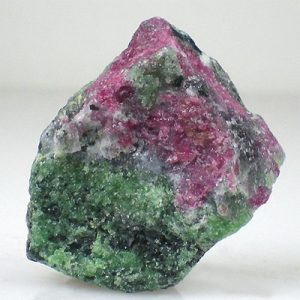Zoisite: Gemstones Information
Zoisite, a calcium aluminum silicate mineral, is renowned for its striking colors, diverse crystal habits, and metaphysical properties. Named after the Slovenian nobleman Baron Sigmund Zois von Edelstein, who contributed to the study of minerals, zoisite has captivated gem and mineral enthusiasts for centuries. Here’s a closer look at the information and benefits associated with zoisite:
Geological Origin and Composition
Zoisite belongs to the epidote mineral group and typically forms in metamorphic environments, particularly in association with igneous and metamorphic rocks such as gneiss, schist, and marble. It is composed of calcium, aluminum, silicon, and oxygen atoms arranged in a crystalline structure. Zoisite’s color can vary widely depending on trace elements present, with common varieties including green, blue, pink, and yellow.
Varieties of Zoisite
Green Zoisite: The most well-known variety of zoisite is green zoisite, often referred to as “Tanzanite” when it exhibits a blue-violet color. Tanzanite, discovered in Tanzania in the 1960s, owes its blue hue to the presence of vanadium and chromium impurities. It has become highly prized for its rarity and vibrant coloration, particularly in the gemstone market.
Pink Zoisite: Pink zoisite, also known as “Thulite,” derives its color from manganese impurities. Thulite is often used as a lapidary material and is prized for its delicate pink hues, which can range from pale pink to deep rose.
Yellow Zoisite: Yellow zoisite, sometimes referred to as “Yellow Tanzanite” or “Golden Tanzanite,” is relatively rare and is prized for its warm golden tones. It may contain iron impurities that impart its characteristic color.
Metaphysical Properties
Zoisite is believed to possess various metaphysical properties that promote emotional healing, spiritual growth, and physical well-being:
Emotional Healing: Zoisite is said to alleviate stress, anxiety, and emotional trauma, promoting a sense of calmness and balance. It is believed to help release negative emotions and past traumas, allowing individuals to embrace self-love, compassion, and forgiveness.
Spiritual Growth: Zoisite is associated with the heart chakra and is believed to stimulate spiritual growth, compassion, and empathy. It encourages individuals to connect with their inner selves, deepen their spiritual practices, and cultivate a sense of harmony with the universe.
Physical Healing: In crystal healing practices, zoisite is thought to support physical healing and vitality. It is believed to boost the immune system, alleviate physical ailments, and promote overall health and well-being.
Creative Inspiration and Expression
Zoisite is said to stimulate creativity, inspiration, and artistic expression. It is believed to awaken dormant talents, enhance intuition, and encourage individuals to pursue their creative passions with enthusiasm and confidence.
Environmental and Industrial Uses
Zoisite’s hardness and durability make it suitable for various industrial applications, including as a raw material in ceramics, refractories, and abrasives. It is also used as a decorative stone in jewelry, carvings, and ornamental objects.
Conclusion
In summary, zoisite is a versatile and captivating mineral with a rich array of colors and metaphysical properties. Whether admired for its beauty, cherished for its healing properties, or utilized for practical applications, zoisite continues to leave a lasting impression on those who encounter it. Its presence in the worlds of geology, gemology, and metaphysics underscores its enduring significance and appeal.





